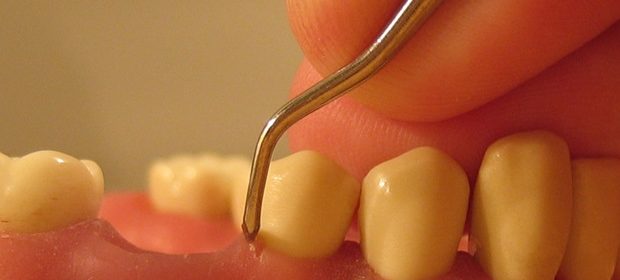What is Periodontitis?

Periodontitis, also sometimes referred to as pyorrhea, is a health condition that involves inflammation of the periodontium, the supporting tissues, bones and ligaments around the teeth.
In severe cases, the alveolar bone in the jaw area can become degraded and, without treatment, eventually lead to the loss of teeth. Periodontitis is the primary cause of tooth loss in adults.
Causes
In the initial stages, plaque and tartar build up between the gums and the base of the teeth. This leads to inflammation in the area, known as gingivitis.
When it is left untreated, periodontitis usually occurs as a complication of gingivitis. The infection spreads from the gums to the bone and ligaments supporting the teeth, causing weakening of the structures.
Symptoms
Symptoms of periodontitis may include:
- Swelling and inflammation of the gums
- Pain when flossing or brushing teeth and gums
- Erosion leads to spaces between teeth
- Pus between teeth and gums
- Metallic taste in the mouth
- Bad breath
- Loose teeth
Risk Factors and Prevention
Some individuals are at greater risk of developing periodontitis. These include:
- Smokers
- Females undergoing hormonal changes (e.g. puberty, pregnancy menopause)
- Diabetics
- AIDS patients
- Cancer patients
- People taking certain medications
- People with family history of the condition
People at risk of the condition should take extra care to prevent periodontitis. They should avoid smoking and practice good dental hygiene. Additionally, it is important for individuals to be aware of the symptoms of gingivitis, to allow them to seek preventative treatment before it progresses to periodontitis.
Initial Treatment
Diagnosis of periodontitis can be made upon inspection of the soft gum tissue surrounding the teeth with a probe and X-ray imaging. This helps to determine the degree of bone loss around the teeth and helps in the treatment plan of the condition.
Initial treatment involves the removal of plaque and tartar around the teeth and gumline with a scaling as debridement procedure.
Medications are usually needed to address the infection in the tissues and prevent the bacteria from spreading and creating further damage.
An antimicrobial mouth rinse such as chlorhexidine may be prescribed to help treat the infection of the gums. This is also available as an antiseptic “chip”, which is placed inside the pockets after root planning and slowly releases the medication over time.
An antibiotic gel, such as doxycycline, can be applied to the affected area to control bacterial growth and decrease the size of periodontal pockets. Antibiotic microspheres containing minocycline may also be used to manage the infection. Oral antibiotics are also sometimes used, although they are associated with more systemic effects.
Dental Surgery
In severe cases, dental surgery may be required in the treatment of periodontitis. The success of these procedures is highly variable and depends on the individual case.
Flap surgery is one technique, which involves the removal of plaque in deep pockets and reducing the size of the pocket. This helps to keep the area clean and the gums can then be repositioned to fit the tooth and heal.
A graft of bone and tissue may be needed in some cases, which helps to promote the regeneration of bone and gum tissue. New bone is placed where the bone has been damaged or destroyed and helps the bone to grow back naturally.
References
- https://www.nlm.nih.gov/medlineplus/ency/article/001059.htm
- http://www.nidcr.nih.gov/oralhealth/Topics/GumDiseases/PeriodontalGumDisease.htm
- http://www.ncbi.nlm.nih.gov/pubmedhealth/PMHT0023281/
Further Reading
- All Periodontitis Content
- Prevention of Periodontitis
- Causes of Periodontitis
- Management of Periodontitis
- Periodontitis and Pregnancy
Last Updated: Aug 23, 2018

Written by
Yolanda Smith
Yolanda graduated with a Bachelor of Pharmacy at the University of South Australia and has experience working in both Australia and Italy. She is passionate about how medicine, diet and lifestyle affect our health and enjoys helping people understand this. In her spare time she loves to explore the world and learn about new cultures and languages.
Source: Read Full Article